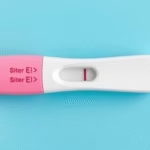In this post, we will be talking about does implantation bleeding always happen. Understanding implantation bleeding is essential for those trying to conceive, as it can be an early sign of pregnancy. Implantation bleeding occurs when a fertilized egg attaches itself to the lining of the uterus, resulting in light spotting. This is often confused with a menstrual period, but there are distinct differences. Recognizing these differences can provide valuable insight into your reproductive health.
Implantation bleeding typically happens about 6 to 12 days after conception, which is usually around the time a woman expects her menstrual period. It is generally lighter in flow, shorter in duration, and varies from pink to brown or even light red. Understanding whether implantation bleeding always occurs can help you gauge the possibilities of pregnancy. In this article, we will explore various aspects of implantation bleeding, provide insights into its occurrence, and address some frequently asked questions.
What Is Implantation Bleeding?
Implantation bleeding is a light spotting that occurs when a fertilized egg adheres itself to the uterine wall. Unlike regular menstrual bleeding, which usually has a heavier flow and a bright red color, implantation bleeding is lighter and typically not accompanied by the same level of cramping or discomfort. The exact cause of this bleeding is still a topic of research, but it is believed to result from the small blood vessels breaking when the embryo implants into the uterine lining. While not all women experience this symptom, it can be a significant early sign of pregnancy.
Does Implantation Bleeding Always Happen?
Many expecting mothers wonder, “does implantation bleeding always happen”. The answer is no; not all women experience implantation bleeding. While some women notice mild spotting or bleeding, others may not notice any signs at all. Factors such as individual body chemistry, hormonal changes, and general health can influence whether or not implantation bleeding occurs. For many women, the absence of implantation bleeding doesn’t necessarily indicate that they are not pregnant, as pregnancy can occur without this symptom. Understanding your cycle and paying attention to other early signs of pregnancy, like missed periods or morning sickness, can help provide a clearer picture of your reproductive health.
Symptoms Associated with Implantation Bleeding
When considering whether implantation bleeding occurs, it is essential to recognize the accompanying symptoms. Many women report light cramps similar to menstruation, but less intense. Some may also experience breast tenderness or mood swings influenced by hormonal fluctuations. If you experience what feels like a regular period along with heavy bleeding, it may require medical attention. Recognizing the symptoms unique to implantation bleeding can help in identifying potential early pregnancy.
Timing of Implantation Bleeding
Understanding the timing of implantation bleeding is crucial for women trying to conceive. Generally, it occurs around 6 to 12 days post-ovulation. This timing can be tricky, as it often coincides with the expected arrival of a menstrual period. Being aware of your ovulation cycle can improve your understanding of when to expect potential signs of pregnancy. Tracking your cycle can help distinguish between normal menstruation and possible implantation bleeding, allowing for early pregnancy detection.
Implantation Bleeding vs. Menstrual Period
It is vital to differentiate between implantation bleeding and a menstrual period, as misinterpretation can lead to unnecessary confusion. Implantation bleeding is typically lighter, shorter in duration, and occurs earlier than a regular period. While a menstrual period usually lasts 3 to 7 days, implantation bleeding often lasts a few hours up to 2 days. Knowing these distinctions can be pivotal in determining if you might be pregnant.
What to Do if You Experience Implantation Bleeding
If you experience spotting and suspect it may be implantation bleeding, pay attention to other early pregnancy symptoms. It is advisable to wait a few days before taking a home pregnancy test, as hCG (human chorionic gonadotropin) levels need to rise to indicate a positive result accurately. Consulting a healthcare provider for personalized advice is also a recommended step if you are unsure. They may provide guidance based on your specific health history and symptoms.
Common Misconceptions About Implantation Bleeding
Several myths surround implantation bleeding, which can contribute to confusion. One common misconception is that if you experience no implantation bleeding, you cannot be pregnant. This belief is false as many women conceive without experiencing this symptom. Another misunderstanding is that all forms of spotting are due to implantation; this is not true. Understanding these misconceptions is essential for gaining accurate knowledge about the process of conception.
When to Seek Medical Attention
If you notice heavy bleeding or any significant discomfort, it’s essential to seek immediate medical attention. While light spotting associated with implantation is usually harmless, anything beyond that might indicate other underlying health issues. Monitoring your symptoms and knowing when to seek help is vital for your overall reproductive health.
Self-Care Tips During Early Pregnancy
If you suspect you might be pregnant or have confirmed pregnancy, engaging in self-care is vital. Maintaining a balanced diet rich in fruits, vegetables, and whole grains supports the body’s needs during early development. Staying hydrated, reducing stress through mindfulness, and getting adequate sleep can significantly contribute to your well-being. Regular prenatal check-ups provide a reliable way to monitor your health throughout the pregnancy journey.
Conclusion
In this article, we’ve explored the question of does implantation bleeding always happen and gathered valuable insights surrounding the topic. We discussed what implantation bleeding is, how it differs from a menstrual period, and its timing in relation to conception. We also detailed the symptoms that may accompany this phenomenon, as well as common misconceptions that could lead to confusion. Recognizing the importance of this information can help women better understand their fertility and reproductive health.
Many women find themselves wondering about various symptoms without realizing that implantation bleeding is not a universal experience. Each woman’s body is unique, and while some may notice this early sign of pregnancy, others may not. Tracking cycles, medications, and lifestyle choices is essential in helping to recognize patterns related to understanding reproductive health. Consulting with healthcare providers for personalized guidance can also help clear up uncertainties surrounding pregnancy.
As you move forward, it’s important to remain informed about your health while being gentle with yourself regardless of the presence or absence of implantation bleeding. Overall well-being, mental, and emotional health can significantly impact your journey, so prioritize self-care alongside monitoring symptoms. Should you have further questions on this topic or notice unusual signs, always reach out for professional advice.
Frequently Asked Questions
- 1. Is implantation bleeding a guarantee of pregnancy?
No, not all women experience implantation bleeding, and its absence does not mean you are not pregnant. - 2. How long does implantation bleeding last?
Implantation bleeding typically lasts from a few hours to two days. - 3. Can you take a pregnancy test during implantation bleeding?
It is best to wait a few days after the expected period before taking a test to ensure accurate results. - 4. What color is implantation bleeding?
Implantation bleeding can vary from light pink to brown or light red. - 5. When should I seek medical attention related to implantation bleeding?
Seek medical attention if you experience heavy bleeding, significant pain, or prolonged bleeding.
Further Reading
What Type of Psychotherapy Is Best for Anxiety?







